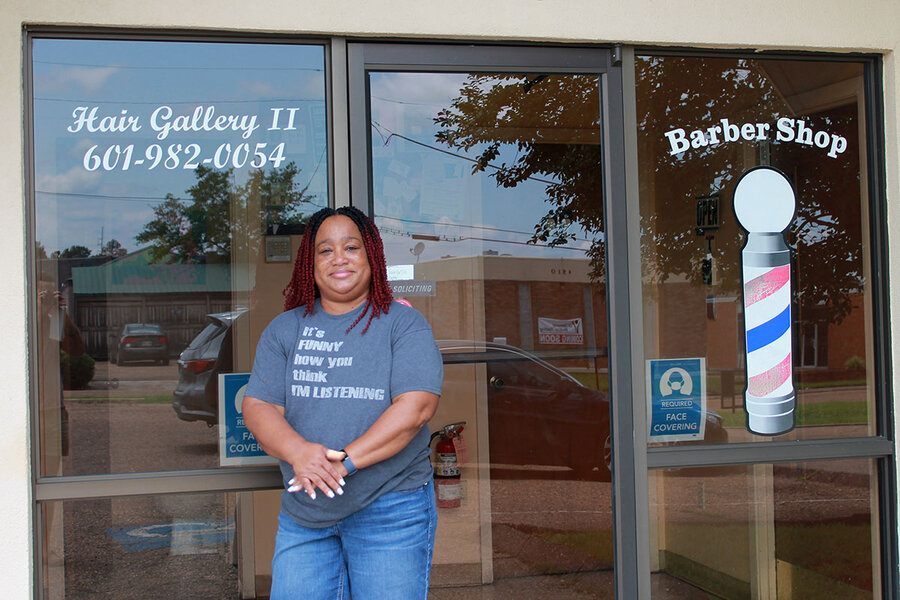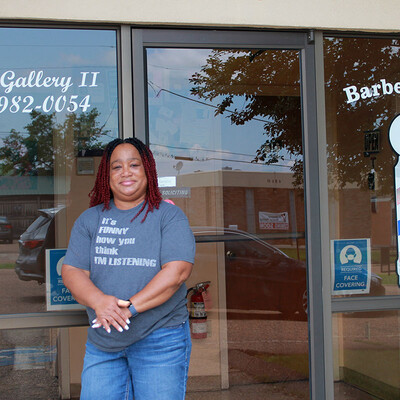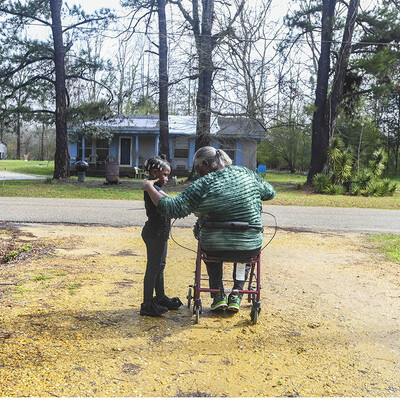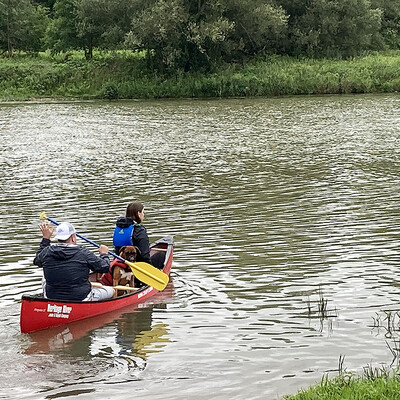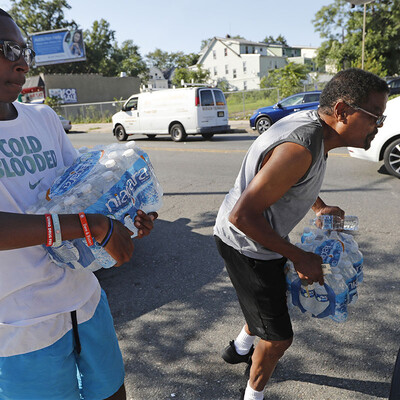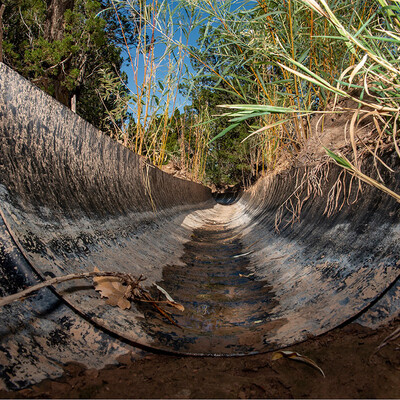First Flint, then Jackson. Is America ready to fix its water supply?
Loading...
| Jackson, Miss.
This winter a deep freeze left 43,000 households in Jackson, Mississippi, without drinkable tap water for weeks. Beyond the severity of the storm, it signaled the depth of the city’s backlog in water-system investment and maintenance.
Jackson’s situation is extreme but far from unique. Across the country, American water systems are crumbling. Decades of disinvestment and neglect, experts say, have left this infrastructure in some cases violating federal standards – or vulnerable to shocks such as February’s freeze. Gaps in access and maintenance are straining a basic social contract in one of the world’s richest nations: namely, that when one turns on the faucet, clean water comes out.
Why We Wrote This
Yes, a winter storm this February was unusually severe for Mississippi. But the failure of the water system in the state’s capital city revealed larger challenges – with what you could call the basic plumbing of society. First in a series on water and justice.
Citizens and policymakers alike are increasingly focused on how to address the challenges. As Jackson’s experience shows, the issue is not just water but justice: inequities along lines of race and class that can deepen when a city’s tax base erodes.
“Nobody figured out how to maintain the system in the long run,” says Mukesh Kumar, an urban planning expert at Jackson State University. “When water systems start breaking down, that’s when you start losing the most important part – trust.”
When an unusually severe freeze struck the Gulf Coast region in February, blanketing everything from Central Texas to Alabama in a coat of ice, the city of Jackson caught national attention, at least briefly.
Both water treatment plants in Mississippi’s capital city were hobbled by the frigid temperatures. Water pressure sagged, compromising drinkability. Jackson’s nearly 43,000 water customers were placed under alert to boil anything that came from their faucets before drinking it.
The crisis dragged into days, then weeks. It was only on March 17 – a month after it began – that the boil advisory lifted for most residents in this majority-Black city.
Why We Wrote This
Yes, a winter storm this February was unusually severe for Mississippi. But the failure of the water system in the state’s capital city revealed larger challenges – with what you could call the basic plumbing of society. First in a series on water and justice.
But if the situation shocked many, Felicia Brisco wasn’t surprised. Owner of a hair salon in the city, she has seen years of challenges – from water main breaks during a 2018 winter storm to boil-water advisories affecting pockets of the city as recently as June. The effects have trickled down from Ms. Brisco’s kitchen to her shampoo-reliant work.
“We have had to turn clients away for weeks at a time due to issues with the water here in Jackson,” she says. “It can be very discouraging for businesses that need water to operate.”
Jackson’s situation is extreme but far from unique. Across the country, American water systems are crumbling. Decades of disinvestment and neglect, experts say, have left this infrastructure in some cases violating federal standards – or vulnerable to shocks such as February’s freeze. And while crises such as the 2014 lead contamination in Flint, Michigan, bring periodic attention to the problem, long-standing gaps in safety, access, and maintenance are straining a basic social contract in one of the world’s richest nations: namely, that when one turns on the faucet, clean water comes out.
“Nobody figured out how to maintain the system in the long run. ... That’s what you’re seeing not only in Jackson, but in many cities across the country,” says Mukesh Kumar, an urban planning expert at Jackson State University. “When water systems start breaking down, that’s when you start losing the most important part – trust.”
But that, advocates say, is just what has been happening. While the disrepair is far from universal, it’s visible in communities big and small, rural and urban, coastal and landlocked. Problems with lead or other contamination are significant in major cities from Chicago and Cleveland to Baltimore and Newark in New Jersey.
It is no coincidence, advocates say, that those locations, like Jackson, are home to majority-Black and other nonwhite populations. Drinking water systems that constantly violated federal safety standards were 40% more likely to occur in places with higher percentages of residents of color, according to a 2019 report from the Natural Resources Defense Council.
Meanwhile, the federal government has reduced its support dramatically – from providing 63% of all U.S. water infrastructure investment in 1977 to 9% in 2017. Experts say that shift, tracked by The Value of Water advocacy group, disproportionately affected lower-income communities that could not make up the difference.
A NAACP report from 2019 describes how the intersecting forces of housing segregation, poverty, and rising cost of water have left Black communities across the country with reduced access to clean drinking water. In this sense, the emergency is one not only of infrastructure but also of justice.
Yet in the face of all this, something hopeful is taking place – and a trend that’s being explored in this and other Monitor articles in a series on water and justice.
For years, advocates say, water infrastructure was an “out of sight, out of mind” problem, a looming crisis literally hidden underground. Now, from small towns and urban neighborhoods to the corridors of Capitol Hill, a growing group of neighbors, activists, local officials, and lawmakers are talking about water access, and are joining together to come up with solutions. Support in the U.S. Senate and House for $35 billion or more in spending on water infrastructure signals rising bipartisan national attention to the issue.
“People are waking up to this fundamental truth that in a country with as many financial and technological resources as we have ... it should be a basic human right that everyone has access to clean, safe drinking water,” says Maureo Fernández y Mora, the associate state director for Massachusetts for the advocacy group Clean Water Action. “That is not currently something that has been delivered upon for a number of communities across the United States, and that really does need to change.”
That’s what people such as Ms. Brisco are increasingly demanding in Jackson.
“We know it’s not going to happen overnight, because the failure didn’t happen overnight,” Ms. Brisco says of how she and other residents are calling for changes. But “clean water is a necessity that all citizens should have access to.”
“Without water or sewer, you don’t have a city”
The path toward answers involves grasping how the problems emerged in the first place. Funding shortfalls, not just federal but local, have played a key role. And behind that lies a story of demographic change. In 1960, Jackson’s population of 148,000 was roughly 64% white and 36% Black. But as in other metro areas nationwide, school integration led to white flight, and in later decades other factors including rising crime rates fueled a further exodus to the suburbs among Jackson’s white and Black middle class alike.
With them, too, went a large portion of a tax base that Mississippi’s largest city has historically depended upon. Today, roughly 1 in 4 of Jackson’s more than 166,000 residents earn below the federal poverty line. About 16% of the city’s population today is white; 82%, Black.
Mississippi state Rep. De’Keither Stamps says the infrastructure inequalities are drawn along income lines, even as the effects fall disproportionately on Black residents.
“Jackson’s been led by Black leadership for 30 years. This is a class issue more so than a race issue. This is a this-side-of-town versus that-side-of-town sort of issue,” says Representative Stamps, a former Jackson city councilman. “West and south Jackson have been disinvested when it comes to infrastructure for a long time.”
In March, Jackson Mayor Chokwe Lumumba, a Democrat, conservatively estimated that the city’s overall infrastructure upgrades could require up to $2 billion in funding – a massive tally for a city with an annual budget of about $300 million – with at least half of the upgrades destined for investment in the sewer system alone.
More than many cities, Jackson is a sprawling metro area with more than 1,500 miles of water mains running underneath its streets. It was also designed with a larger modern population in mind, yet its population has declined by about 20% since peaking at 200,000 in 1980, according to U.S. census data.
“At the heart of the problem is that lack of planning for operations and maintenance in the 1970s,” an era when cities were reaping federal grants from the 1972 Clean Water Act, says Dr. Kumar at Jackson State. “The way I see it right now is that without federal assistance, this is going to be a tall order. I don’t see how many American cities actually come out of this water crisis on top.”
Yet the imperative is clear. From the aqueducts of Rome to the canal and reservoir systems of Cambodia’s ancient Khmer civilization, public water systems have long been a foundation for societies to flourish.
“Community water systems cannot be allowed to collapse,” Dr. Kumar says. “Either you have to replace it, or otherwise, without water or sewer, you don’t have a city.”
Years of work ahead
Charles Williams, Jackson’s public works director, feels that pressure directly.
“My biggest fear during all this was that somebody was going to drive up to my office and basically say, ‘All right, you’re out, pack your bag – we’re going to take you to the outskirts of Jackson and leave you there,’” Dr. Williams says of his concern for eroding trust between community managers like himself and Jackson residents. “We understand the frustration.”
Dr. Williams speaks candidly of daunting work to come.
In all likelihood, Jackson is facing a 10- to 20-year project that will call for the replacement of old pipes and upgrading treatment plants. The city initially made a request to the state for $47 million for water and sewer upgrades. Mississippi lawmakers allocated $3 million, with the hope that federal dollars from President Joe Biden’s American Rescue Plan – more than $46 million of which is reserved for the city – will help in covering the difference.
In March, U.S. Sen. Cindy Hyde-Smith, a Mississippi Republican, introduced a bill that would double the direct allocation to Jackson by authorizing the Army Corps of Engineers to spend $47 million for “environmental infrastructure projects.”
“The overall recovery of Jackson is going to take time,” Dr. Williams says. “This will go beyond my tenure here at the city, and the mayor’s.”
Meanwhile, the concept of maintaining patience with the city has begun to wear on some of its longtime residents, even as they push for action on water among other local issues.
Civil rights movement activist Euvester Simpson and her husband, Les Range, the former executive director of the Mississippi Department of Employment Security, understand the constraints facing current city leaders.
“I think the neglect occurred before the current leadership came into place,” Mr. Range says. “West Jackson, south Jackson, they experienced neglect. And then, as happens all over the place when African Americans take control, they inherit a mess. It’s hard to put resources together to fix it.”
Yet they find themselves questioning whether current city leaders are working effectively together – and earning public trust.
“I’m very much concerned about the direction that we’re going in, if we’re going to survive without the city just absolutely crumbling and falling apart,” Ms. Simpson says. “I don’t know what we’re going to do, but I know that I believe we need some new leadership.”
She adds, “We’re not going to give up on Jackson – yet.”
Stephanie Hanes reported for this article from Northampton, Massachusetts.
Editor's note: The comment by Maureo Fernández y Mora, associate state director for Massachusetts for the advocacy group Clean Water Action, has been clarified.




